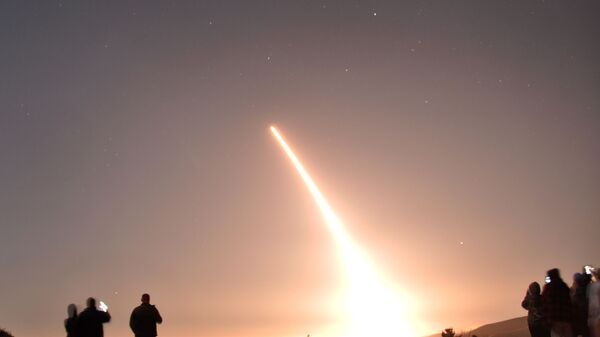As is typical of Minuteman III tests, the solid-fueled three-stage rocket was launched from Vandenberg Air Force Base on the California coast and traveled 4,200 miles to splash down in a test range in Kwajalein Atoll, a massive coral atoll in the Republic of the Marshall Islands in the western Pacific Ocean. The test began at 12:27 a.m. Pacific Daylight Time, according to a news release by the base.
The launch was scheduled for Wednesday, but delayed because of poor weather conditions in Kwajalein.
The purpose of such tests is essentially practice: Air Force Global Strike Command said the launches “validate and verify the effectiveness, readiness and accuracy of the weapon system as they are conducted to test the entire intercontinental ballistic missile system.”
The Minuteman missiles were built in the early 1960s and pioneered the use of solid fuel in ICBMs, enabling them to be stored while ready to fire for long periods of time. The innovation also allowed the US to create “missile farms,” where dozens of Minutemen were controlled by a relatively small crew. The missile’s third iteration, the Minuteman III, was yet another innovation: it was the first ICBM to have multiple independent reentry vehicle (MIRV) capability; however, all 450 missiles deployed today have just one massive warhead.
Last month, defense contractor Northrop Grumman was awarded a $13.3 billion contract to design and build the Minuteman III’s replacement under the Ground-Based Strategic Deterrent (GBSD) initiative. However, the Pentagon estimates the total cost of replacing the entire ICBM fleet will top $95.8 billion. The Air Force hopes to begin introducing the new missiles by 2029.
A separate project by the National Nuclear Security Administration, the division of the US Department of Energy responsible for the US nuclear arsenal, aims to modernize the W87 nuclear warhead on top of many of the Minuteman IIIs. A recent Government Accountability Office report estimates the cost of updating the 450-kiloton warhead will be at least $14.8 billion.
According to the Lawrence Livermore National Laboratory in California, which is heading the effort, the new W87-1 warheads will continue to be used atop the new GBSD missiles, along with a new reentry vehicle.

